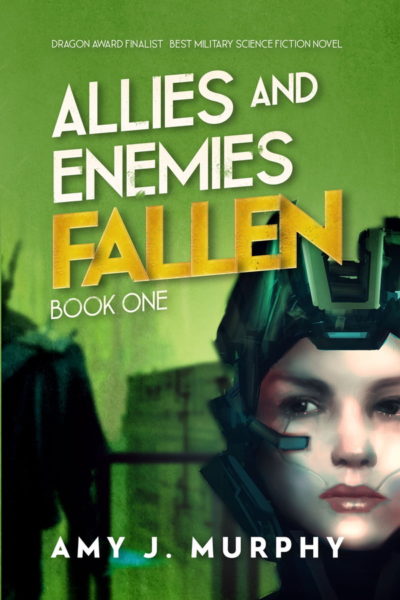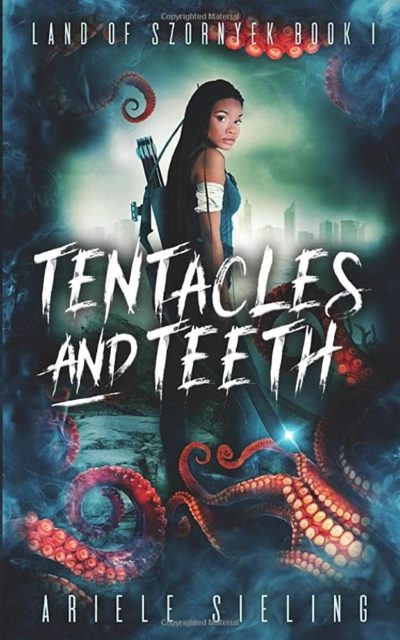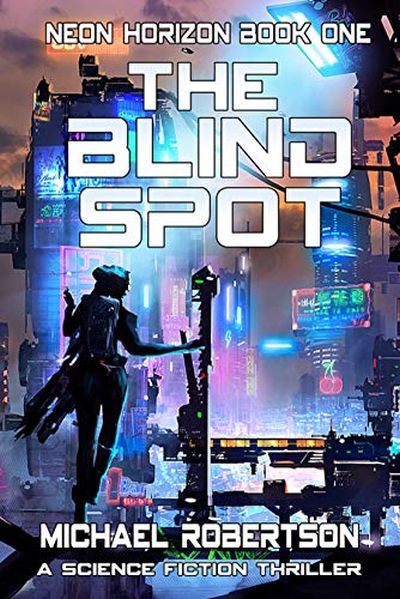Detectives as protagonists entered the realm of English-language fiction in the 19th century, especially in its later decades, and quickly captured the fancy of much of the reading public. The earliest examples, such as Poe’s Auguste Dupin, Sherlock Holmes, and Chesterton’s Father Brown, find their adventures solely in the natural world. But it wasn’t very long before other writers took the basic idea into the supernatural realm, to create the figure of the occult or “psychic” detective, such as Flaxman Low or William Hope Hodgson’s Carnacki, a solver of mysteries that involve, or at least often involve, the weird and uncanny. Like their natural-world counterparts, the occult detectives in this formative era were nearly all male.
But in Shiela Crerar, the heroine of this six-story cycle originally published in The Blue Magazine in 1920, Ella M. Scrymsour (whose full name was Ella Mary Scrymsour-Nichol) created a distaff incarnation of this type of figure, who can hold her own with any of her male colleagues. I first encountered the character in “The Werewolf of Rannoch,” a story in a horror anthology I read back in 2020. (Prior to that, I’d never heard of the character or the author.) Guessing correctly that Shiela was a series character, I tracked this book down in the Goodreads database; and having gotten it as a gift this past Christmas, I was very pleased to finally get to read all of Shiela’s exploits!
 Orphaned as a child, Shiela Crerar was happily raised by an apparently bachelor uncle, a Highland laird with a lot of lineage but not a lot of money. The Sight ran in the family; both she and Uncle John were strongly psychic (her gift –or curse– as she’ll discover early on, allows her to see ghosts, something most people can’t), and she shared in his interest in and study of the paranormal. She’s a kind-hearted, frank and down-to-earth young woman who loves nature and likes to read; she’s also one with considerable determination and a strong will.
Orphaned as a child, Shiela Crerar was happily raised by an apparently bachelor uncle, a Highland laird with a lot of lineage but not a lot of money. The Sight ran in the family; both she and Uncle John were strongly psychic (her gift –or curse– as she’ll discover early on, allows her to see ghosts, something most people can’t), and she shared in his interest in and study of the paranormal. She’s a kind-hearted, frank and down-to-earth young woman who loves nature and likes to read; she’s also one with considerable determination and a strong will.
His sudden death when she’s 22 leaves her the owner of his smallish estate, Kencraig, but it’s heavily mortgaged. Not willing to sell a place that’s profoundly dear to her, she rents it out on a five-year lease, resolved to find a line of work that will ultimately let her pay off the mortgage (while providing for her in the meantime). When nothing else offers, she hits on the idea of offering her services as a psychic detective. (All of this is presented to the reader in the first few pages of the first story, “The Eyes of Doom.”)
As we learn in the last story, “The Wraith [the back cover copy incorrectly gives that word as “Wrath”) of Fergus McGinty,” her mission takes her five years to complete. That she completes it isn’t really a spoiler; from the beginning, I think that most readers would surmise that she will. Her career as an occult detective involves her in some very intense and dangerous experiences, well titled as “Adventures.” Besides the ones already mentioned, the other stories are “The Death Vapour,” “The Room of Fear,” and “The Phantom Isle.”
Her clients are mostly well-to-do Scots gentry, and her travels will take her to various Highland locales, including the Isle of Skye and its environs. She’ll deal with mostly supernatural phenomena (one story centers around what proves to be a case of very grim psychic imprinting), including murderously vengeful revenants, a homicidal “Elemental,” and lycanthropy. The latter is explained here as astral projection, in which the sleeping werewolf’s astral self projects –sometimes unknown to the projector, but in some cases deliberately– and can take on the substantial form of a ravening human-beast hybrid.
Scrymsour’s tales are plot-driven, straightforward, suspenseful and intense, with a real sense of danger and menace. Her prose style is direct and (along with the relatively short length of the collection) makes for a quick read. Most of the stories involve a backstory rooted in fictional (but realistic) events in Scotland’s long and often bloody history, including savage clan warfare and the failed Jacobite rising in 1745 and its vicious repression. I felt this exhibited some affinity to M. R. James’ “antiquarian” approach to the supernatural tale, which for me was a plus.
There’s some effective reference to Celtic and other occult lore. Scrymsour furnishes her heroine with a love interest introduced in the first story, Stavordale Hartland, so there’s a note of clean romance. If we picture the stories as taking place from 1915-1920, it’s not clear why Stavordale’s not in the military; but the Great War isn’t reflected anywhere in this corpus at all. Shiela packs a pistol and can use it effectively (the author describes it as an “automatic revolver,” which tells us that she knew virtually nothing about handguns!), but that plot element only appears in one story.
There’s not a lot of directly described gore here, but there is reference to mostly off-stage past grisly atrocities, and to present-day violent deaths of animals and humans, both adults and children; and in one case the murder of a two-year old child in real time, though it’s not described in detail and is over in four sentences. Unfortunately, Shiela’s heroic qualities don’t include quick reaction time; my biggest peeve with the book was that she failed to act in time to prevent this! Scrymsour’s characterizations are not sharp; Shiela is the best-drawn character, but Stavordale isn’t developed as much, and the chemistry between the two doesn’t come across as strong.
He also tends to address her with phrases like “little woman”, which I found irksome. But I didn’t find the message of the story cycle to be sexist; he wants her to give up her detective work and marry him, but she won’t do that until she completes her self-set mission. And though one reviewer holds the theory that Shiela’s psychic powers depend on virginity, so that marriage will destroy them, to my mind the conclusion of the last story suggests the opposite; Stavordale comes to realize that her Sight is a permanent part of her, whether she uses it to further a paid career or not.
Author: Ella M. Scrymsour
Publisher: Wildside Press; available through Amazon, currently only as a print book.
A version of this review previously appeared on Goodreads.
 It’s a little hard to explain the universe in which this takes place. Humanity existed. However, their encounter with other races proved problematic for a variety of reasons, and led to them being exterminated, a genocide that was partly collateral damage in a war between the human-adjacent Eugenes and the definitely not Sceeloids. The former have a severely class-based society, where the lower-tiers are bred specifically to be soldiers, for example. One such “breeder” is Sela “Ty” Tyron, though she differs from the rest of her platoon in a couple of important ways. Firstly, her son is part of her group – though he doesn’t know it, having been removed from her care on his birth. His death (at the very beginning of the book, so not much of a spoiler) causes Ty to question everything she has believed about society, and her place in it.
It’s a little hard to explain the universe in which this takes place. Humanity existed. However, their encounter with other races proved problematic for a variety of reasons, and led to them being exterminated, a genocide that was partly collateral damage in a war between the human-adjacent Eugenes and the definitely not Sceeloids. The former have a severely class-based society, where the lower-tiers are bred specifically to be soldiers, for example. One such “breeder” is Sela “Ty” Tyron, though she differs from the rest of her platoon in a couple of important ways. Firstly, her son is part of her group – though he doesn’t know it, having been removed from her care on his birth. His death (at the very beginning of the book, so not much of a spoiler) causes Ty to question everything she has believed about society, and her place in it.




 Orphaned as a child, Shiela Crerar was happily raised by an apparently bachelor uncle, a Highland laird with a lot of lineage but not a lot of money. The Sight ran in the family; both she and Uncle John were strongly psychic (her gift –or curse– as she’ll discover early on, allows her to see ghosts, something most people can’t), and she shared in his interest in and study of the paranormal. She’s a kind-hearted, frank and down-to-earth young woman who loves nature and likes to read; she’s also one with considerable determination and a strong will.
Orphaned as a child, Shiela Crerar was happily raised by an apparently bachelor uncle, a Highland laird with a lot of lineage but not a lot of money. The Sight ran in the family; both she and Uncle John were strongly psychic (her gift –or curse– as she’ll discover early on, allows her to see ghosts, something most people can’t), and she shared in his interest in and study of the paranormal. She’s a kind-hearted, frank and down-to-earth young woman who loves nature and likes to read; she’s also one with considerable determination and a strong will. If you’re even slightly familiar with the Star Trek universe, you’ll be aware of the Prime Directive. While never explicitly stated, it’s the rule which prohibits interfering with the development of less technologically advanced civilization, in particular those that are not capable of space travel, or are unaware of the existence of life beyond their own planet. It’s a key concept in this book too, though is meshed together with a religious theme – not something often found in this kind of science fiction.
If you’re even slightly familiar with the Star Trek universe, you’ll be aware of the Prime Directive. While never explicitly stated, it’s the rule which prohibits interfering with the development of less technologically advanced civilization, in particular those that are not capable of space travel, or are unaware of the existence of life beyond their own planet. It’s a key concept in this book too, though is meshed together with a religious theme – not something often found in this kind of science fiction. By the time I reached the end of this, what stood out most is how far we had come from the initial scenario. We start way out in deep space, where the crew of the Váli are awoken from their cryo stasis after the ship suffers significant damage as a result of a hull breach. By the end, everything has changed dramatically. The situation back on Earth, the mission of the Váli, and the very nature of the heroine, 25-year-old comms and electronics specialist, Daisy Swathmore, are are all radically different from what they initially seem to be. It’s basically a dramatic arc for the entire human race.
By the time I reached the end of this, what stood out most is how far we had come from the initial scenario. We start way out in deep space, where the crew of the Váli are awoken from their cryo stasis after the ship suffers significant damage as a result of a hull breach. By the end, everything has changed dramatically. The situation back on Earth, the mission of the Váli, and the very nature of the heroine, 25-year-old comms and electronics specialist, Daisy Swathmore, are are all radically different from what they initially seem to be. It’s basically a dramatic arc for the entire human race. When I see “Reader discretion is advised,” on an Amazon page, I tend to take it with a grain of salt. I’ve been enjoying media at the outer edges for longer than most readers here have been alive, and so am not easily shocked, disturbed or offended, to put it mildly. I’m ussure this quite managed to do any of those, but I will definitely say this: yes, reader discretion
When I see “Reader discretion is advised,” on an Amazon page, I tend to take it with a grain of salt. I’ve been enjoying media at the outer edges for longer than most readers here have been alive, and so am not easily shocked, disturbed or offended, to put it mildly. I’m ussure this quite managed to do any of those, but I will definitely say this: yes, reader discretion  I was disappointed by the lack of tentacles. However, there were certainly no shortage of teeth in this post-apocalyptic tale, which takes place decades after the arrival of monsters, from an uncertain source, has led to the collapse of civilization on Earth. The survivors are left to scratch out a fragile existence, trying to dodge the many kinds of lethal new fauna which inhabit the landscape. Askari is a young woman who forms part of one such nomadic group, but finds herself increasingly questioning the strict rules by which they operate. As punishment for breaking these laws, is sent by elders of her tribe on a hazardous mission into a long-abandoned urban area.
I was disappointed by the lack of tentacles. However, there were certainly no shortage of teeth in this post-apocalyptic tale, which takes place decades after the arrival of monsters, from an uncertain source, has led to the collapse of civilization on Earth. The survivors are left to scratch out a fragile existence, trying to dodge the many kinds of lethal new fauna which inhabit the landscape. Askari is a young woman who forms part of one such nomadic group, but finds herself increasingly questioning the strict rules by which they operate. As punishment for breaking these laws, is sent by elders of her tribe on a hazardous mission into a long-abandoned urban area. War correspondent
War correspondent  On Amazon, this is subtitled, “A full-throttle Thailand thriller,” but that’s a little bit of a misleading label. The bulk of the story – at least, the bits that matter – actually take place in China. The book itself goes with “A full-throttle thriller throughout Asia,” Except it starts off in the not-exactly Asian setting of San Bernardino, California, where Bree Thomas is just about to graduate. This is despite the problems of her adopted family, who she was sent to live with after her parents were killed in Thailand. She gets a chance to escape it all, in the form of an apprentice program with the Meng Foundation, a charitable group who help refugees around the world.
On Amazon, this is subtitled, “A full-throttle Thailand thriller,” but that’s a little bit of a misleading label. The bulk of the story – at least, the bits that matter – actually take place in China. The book itself goes with “A full-throttle thriller throughout Asia,” Except it starts off in the not-exactly Asian setting of San Bernardino, California, where Bree Thomas is just about to graduate. This is despite the problems of her adopted family, who she was sent to live with after her parents were killed in Thailand. She gets a chance to escape it all, in the form of an apprentice program with the Meng Foundation, a charitable group who help refugees around the world. I think I can point almost to the exact point where this one jumped the shark. It had started well enough. Jamie Austen works for the CIA, taking down human traffickers across the world, in conjunction with a non-governmental organization called Save the Girls. Now, I have questions here: why exactly would the CIA
I think I can point almost to the exact point where this one jumped the shark. It had started well enough. Jamie Austen works for the CIA, taking down human traffickers across the world, in conjunction with a non-governmental organization called Save the Girls. Now, I have questions here: why exactly would the CIA  On the surface, Scala City is an idyllic, hi-tech world of prosperity, peace and morality, albeit at the cost of omnipresent surveillance of its residents. But there’s a dirty little secret. The Blind Spot is an area where surveillance is barred, and where the citizens of Scala City go to blow off their sordid steam. Its residents have cybernetically enhanced bodies, something rejected by Scala City, and a zero-tolerance policy for any kind of monitoring. It’s run by Wrench, who has kept his daughter Marcie Hugo under strict control since the death of her mother. However, like all teenagers, the 16-year-old Marcie is seeking to spread her wings, and has been making covert excursions into Scala City, with the aim of moving there some day soon.
On the surface, Scala City is an idyllic, hi-tech world of prosperity, peace and morality, albeit at the cost of omnipresent surveillance of its residents. But there’s a dirty little secret. The Blind Spot is an area where surveillance is barred, and where the citizens of Scala City go to blow off their sordid steam. Its residents have cybernetically enhanced bodies, something rejected by Scala City, and a zero-tolerance policy for any kind of monitoring. It’s run by Wrench, who has kept his daughter Marcie Hugo under strict control since the death of her mother. However, like all teenagers, the 16-year-old Marcie is seeking to spread her wings, and has been making covert excursions into Scala City, with the aim of moving there some day soon.